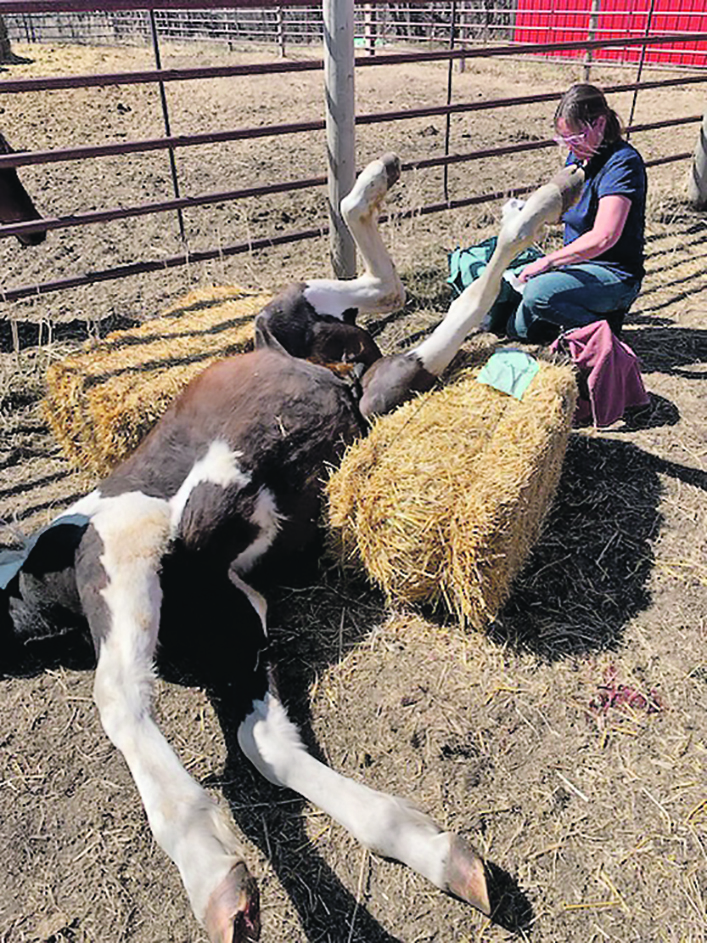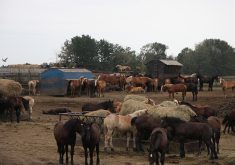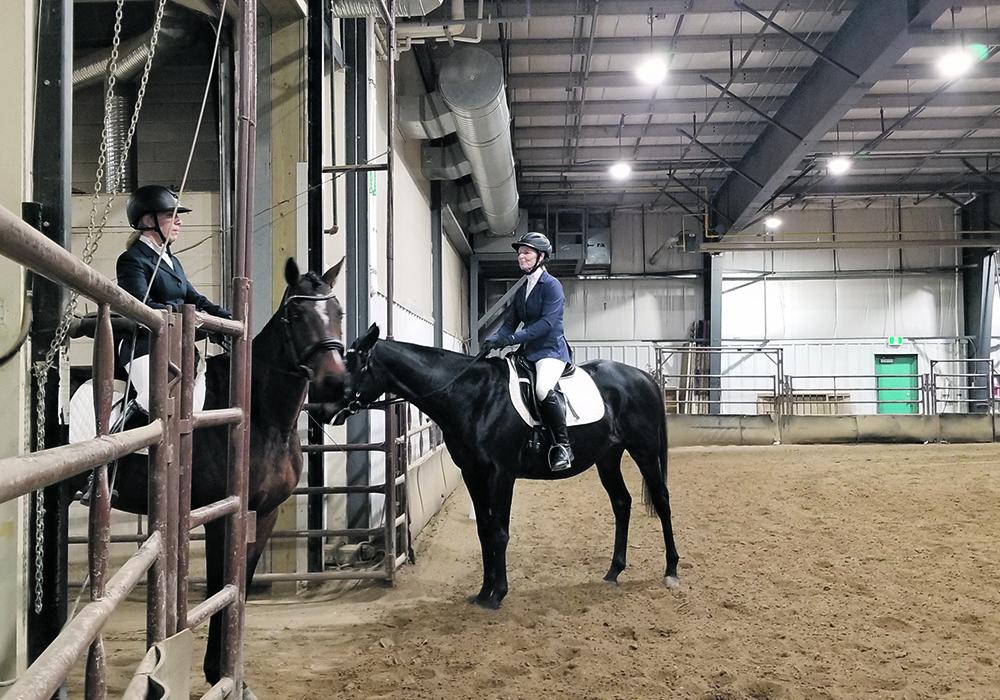Weanlings, yearlings and two-year-olds require attention, protection and quality hay for long-term health
Canadian horse breeding ramped up during the pandemic when demand for horses increased. Now there are a lot of yearlings and two-year-olds around.
Weanlings, yearlings and two-year-olds are curious, feisty and accident-prone. These young horses are particularly at risk for lacerations, eye injuries and becoming tangled in fencing.
Dr. Nora Huaman Chavarria is a clinical associate veterinarian in large animal clinical science at the University of Saskatchewan’s Western College of Veterinary Medicine. She works on farms around Saskatoon with the college’s equine field service team.
Chavarria notes failure to halter-break young horses presents challenges if the horse has a serious accident or injury. The horse might need to be sedated using darts or a chute system. Neither is ideal and can lead to further injuries.
That’s why young horses should be handled early and regularly, she says.
“Horse owners can’t prevent every injury. If a young horse is low on the pecking order, it can be chased around by herd mates or try to jump a fence. Gelding herds often tend to be easier for bringing in a youngster.”
Geldings can help socialize a young horse and act as laid-back uncle types. In contrast, mares can have a strong instinct to mother and may try to take the foal away from its biological dam. Stallions can be a threat to a young horse, says Chavarria.
While youngsters still have soft hoofs and usually don’t need a farrier until six months of age or so, Chavarria suggests picking up their feet so they become familiar with the feeling. She also encourages touching a foal’s body, mouth and face, and getting it used to rectal temperature-taking.
She recommends deworming in the first six to eight weeks and then every two months for the first year, with alternating dewormers.
Owners concerned about choosing the right type of dewormer should submit a sample to their veterinarian for a fecal egg count. This will give the number and type of worms present.
Before weaning, a foal receives antibodies through its dam’s milk. Foals are typically weaned at four to six months of age. At this point, they become weanlings and the first series of vaccines can be given.
The core vaccinations in Canada are against eastern-western encephalomyelitis, West Nile virus, rabies and tetanus.
Risk-based vaccines include equine influenza, equine herpes virus 1 and 4, and strangles. Young horses are exceptionally susceptible to these highly infectious diseases and should be vaccinated.
At about two years old, many horses are sent for training. An unfamiliar or stressful environment, combined with animals from different barns in one place, can increase risk of disease.
Not all foals grow wolf teeth and not all owners get these teeth pulled. Wolf teeth are often removed in performance horses when there’s a concern they will interfere with the bit during training. The easiest time to remove a foal’s wolf teeth is when he is already under anesthesia for castration. This usually occurs at the weanling to yearling stage.

Young horses are susceptible to warts on their muzzles and faces. Caused by the papilloma virus, these warts are usually only seen on horses under four years old and are not contagious to humans. Usually warts are self-limiting and don’t require further treatment.
Jessica Wruck is owner-operator of Wruck Riding Centre near Saskatoon. She and her husband have about 48 horses (including boarders) and focus on breeding working cow horses for reining and cutting. The couple train their own Quarter horses on-site to sell.
“My best piece of advice for owners of young horses is to have good quality hay available all the time, especially through the winter,” says Wruck. A young horse needs to eat two to three percent of its body weight each day.
“Sometimes owners overlook the mental health of their horses. By living in the social setting of a herd, I think young horses become more mentally well-balanced. In our herds, we try to have at least two young horses of the same age so they can buddy up,” she says.






![Conservative agriculture critic and Alberta Foothills MP John Barlow said some [people who raise horses for the overseas meat market] were harassed and bullied and wanted no part of the study, even though they could lose their livelihood if the bill is passed. | File photo](https://static.producer.com/wp-content/uploads/2024/04/30150023/03-BJM121610horse-feedlot-235x165.jpg)










